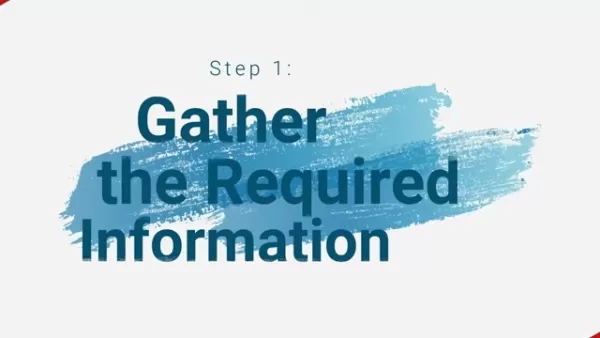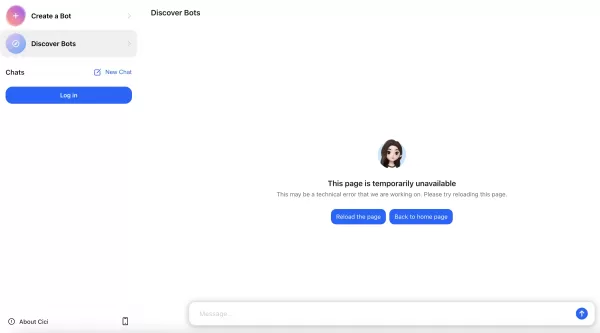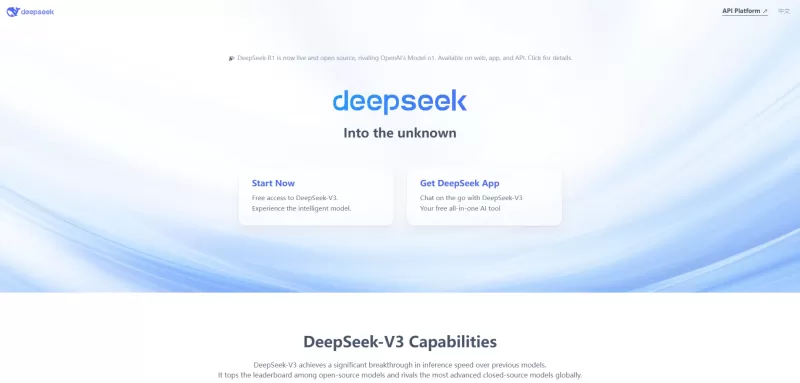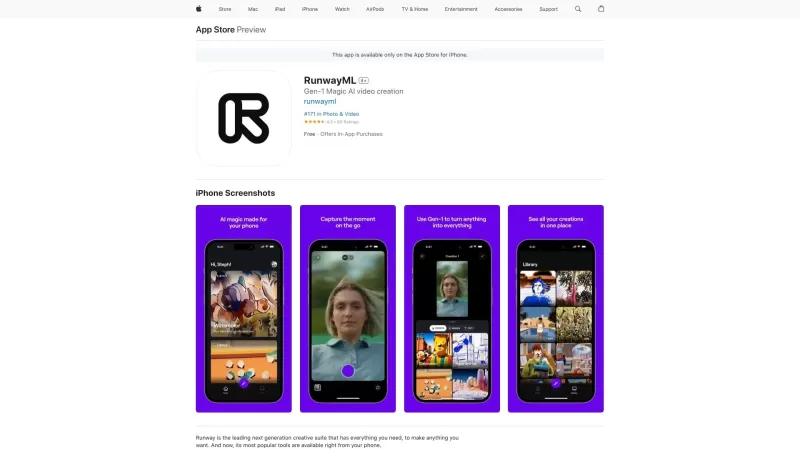Boost Productivity Using AI: Key Tools and Strategies
In today's fast-paced world, productivity isn't just a nice-to-have; it's essential. Artificial Intelligence (AI) is transforming how we work, offering tools that streamline our daily tasks, automate repetitive chores, and boost overall efficiency. Whether you're an entrepreneur managing multiple ventures, a student aiming for academic success, or a corporate professional climbing the career ladder, AI tools can make a significant difference in your productivity. Let's dive into how AI can revolutionize your work life.
Understanding AI-Powered Productivity
What is AI-Powered Productivity?
AI-powered productivity is all about using artificial intelligence to make our tasks smoother and more efficient. It's a broad field that includes everything from automating mundane processes to providing insights that help us make better decisions. AI tools use machine learning, natural language processing, and automation to help us organize, prioritize, and execute tasks with less effort. The goal? To free up our time so we can focus on more creative and strategic work.

The Essence of AI in Productivity
At its heart, AI's role in productivity is to enhance, not replace, human capabilities. It automates routine tasks, lightening our load so we can concentrate on what really needs our attention—like creative thinking and strategic planning. It's about making our work life easier and more productive.
Key Technologies Behind AI Productivity Tools
- Machine Learning (ML): This tech lets AI systems learn from data, spot patterns, and make predictions or decisions without needing to be explicitly programmed.
- Natural Language Processing (NLP): NLP helps AI understand, interpret, and generate human language, making communication and content creation smoother.
- Automation: AI automation takes care of repetitive tasks like data entry, scheduling, and reporting, cutting down on manual work and errors.
The Broader Impact
AI-powered productivity doesn't just benefit individuals; it also enhances team collaboration and organizational performance. By improving communication, streamlining workflows, and providing data-driven insights, AI can significantly boost business outcomes. Embracing AI tools gives businesses a competitive edge, enabling them to work more efficiently, innovate quickly, and adapt to market changes.
Examples of AI Productivity Tools
- Task Management Tools: Trello with Butler AI can automate your workflows and task assignments, making your team's work more efficient.
- Writing Assistants: Tools like Jasper can churn out high-quality content in a flash, saving you hours of writing time.
- Transcription Services: Otter.ai offers real-time transcriptions for meetings, so you can focus on the discussion instead of scribbling notes.
By weaving AI into your daily operations, you can achieve higher productivity levels, reduce stress, and focus on what truly matters.
How AI Enhances Productivity: Key Benefits
Automating Repetitive Tasks
One of the biggest ways AI boosts productivity is by taking over repetitive tasks. Think about all those hours spent on manual data entry, scheduling appointments, or generating routine reports. AI tools can handle these efficiently, freeing you up for more strategic work. For instance, AI can automatically fill in spreadsheets, schedule meetings based on availability, and generate standardized reports without you lifting a finger. This not only saves time but also cuts down on errors, making your work more accurate and reliable.

Improving Decision-Making with Data-Driven Insights
AI also enhances decision-making by giving us data-driven insights. Instead of relying on gut feelings and limited data, AI tools can analyze vast amounts of information to spot trends, patterns, and correlations we might miss. This helps us make more informed and strategic decisions, leading to better outcomes. For example, AI can analyze market trends and customer behavior to help businesses identify new opportunities and optimize their strategies.

Enhancing Communication and Collaboration
AI plays a vital role in improving how we communicate and collaborate at work. Traditional methods can be slow and prone to misunderstandings, but AI tools can streamline these processes. They can translate messages in real-time, summarize long documents, and even provide personalized communication suggestions. AI-powered project management tools can track progress and help teams work together more seamlessly, fostering a more productive work environment.

Reducing Errors and Ensuring Accuracy
Another big benefit of AI is its ability to reduce errors and ensure accuracy. We all make mistakes, especially with repetitive or complex tasks, but AI tools can perform these with a high degree of precision. For example, AI can automatically proofread documents, verify data accuracy, and detect anomalies in financial transactions. This leads to higher-quality work, lower costs, and a better reputation for your organization.

Pricing (Trello, Jasper, Grammarly, Otter.ai, Calendly, ClickUp, MindManager)
Pricing Structure
The pricing for AI productivity tools varies based on their features and the level of usage. Most use a tiered pricing model, offering a free plan with basic features and paid plans that unlock more advanced capabilities. Some also offer custom pricing for larger organizations. Here's a quick look at the pricing structures of some popular AI productivity tools:
Trello
Trello has a freemium model with a free plan for basic use. Paid plans like Standard and Premium offer more features like advanced checklists and custom fields. Enterprise plans are available with tailored solutions and pricing.
Jasper
Jasper's pricing is based on word credits and the number of users. Plans include Starter for simple content generation and Boss Mode for advanced AI capabilities and faster content creation.
Grammarly
Grammarly offers a free version with basic grammar and spelling checks. Grammarly Premium provides advanced writing suggestions and plagiarism detection. Grammarly Business is designed for teams and includes collaboration features and reporting.
Otter.ai
Otter.ai has a free plan with limited transcription minutes. Paid plans like Pro and Business offer more transcription minutes and advanced features.
Calendly
Calendly's free Basic plan has limited meeting types and integrations. Paid plans like Essentials, Professional, and Teams offer more meeting types, custom branding, and advanced integrations.
ClickUp
ClickUp offers a free plan with basic task management features. Paid plans like Unlimited, Business, and Enterprise unlock advanced features such as custom fields and automation.
MindManager
MindManager is available as a perpetual license or a subscription, with pricing based on the version, add-ons, and number of users. Enterprise solutions come with tailored pricing and support.
Pros and Cons of AI in Productivity
Pros
- Increased Efficiency: AI automates repetitive tasks, freeing up your time for more important work.
- Improved Accuracy: AI reduces errors in calculations, transcriptions, and workflows.
- Better Decision-Making: AI provides data-driven insights for more informed decisions.
- Enhanced Communication: AI streamlines messaging and project management.
- Reduced Costs: AI optimizes resource allocation and cuts operational expenses.
Cons
- Job Displacement: AI automation can lead to job losses in routine-based roles.
- Data Privacy Concerns: AI tools collect and analyze vast amounts of data, raising privacy issues.
- Algorithmic Bias: AI algorithms can perpetuate existing biases in data.
- Implementation Costs: Setting up AI solutions can be expensive.
- Dependence on Technology: Over-reliance on AI can reduce human critical thinking.
Essential AI Tools to Boost Productivity
Task Management and Organization
For effective task management, AI tools can be a game-changer. They automate task assignments, track progress, and give you insights into team performance. Here are some essential tools:

- Trello with Butler AI: Trello uses a Kanban-style board to organize tasks and projects. With Butler AI, it can automate workflows like assigning tasks and setting deadlines, reducing manual effort.
- ClickUp: ClickUp is a comprehensive project management tool that uses AI to track tasks and manage workflows. It helps teams stay on track and deliver projects on time.
- Microsoft OneNote: OneNote can be integrated with AI to improve organization and information retrieval. AI algorithms can tag notes and provide personalized recommendations for relevant information.
AI Writing Assistants
AI writing assistants are invaluable for generating high-quality content quickly. They use natural language processing to analyze text, suggest improvements, and even generate entire articles or blog posts. Here are some essential tools:
- Jasper: Jasper helps you create compelling content for blogs, articles, and social media. It uses machine learning to generate original content based on your input.
- Grammarly: Grammarly uses AI to refine your writing and ensure error-free communication. It checks grammar, spelling, and style, providing suggestions for improving clarity and impact.
Meeting Productivity Tools
Meetings can be time-consuming, but AI tools can help streamline them, improve collaboration, and ensure key information is captured. Here are some essential tools:
- Otter.ai: Otter.ai provides real-time transcription services, allowing participants to focus on the discussion rather than taking notes. It integrates with various video conferencing platforms.
- Calendly: Calendly uses AI to optimize scheduling and save time. It analyzes availability and automatically schedules meetings based on participants' preferences.
Note-Taking and Information Management
Effective note-taking and information management are crucial for productivity. AI tools can help organize notes, retrieve information quickly, and improve overall knowledge management. Here are some essential tools:
- Microsoft OneNote: OneNote can be integrated with AI to improve organization and information retrieval. AI algorithms can tag notes and provide personalized recommendations for relevant information.
- MindManager: MindManager leverages AI for brainstorming and strategic planning. It helps you create visual representations of ideas and concepts, making it easier to organize thoughts and identify connections.
Real-World Use Cases for AI Productivity Tools
Entrepreneurs
Entrepreneurs can use AI productivity tools to streamline various aspects of their business. AI writing assistants like Jasper can help generate marketing materials and website content quickly. AI scheduling tools like Calendly can automate appointment scheduling, freeing up time for more strategic tasks. AI analytics tools can provide insights into customer behavior and market trends, enabling better decision-making.
Students
Students can use AI tools to improve their academic performance and manage their time effectively. AI writing assistants like Grammarly can help refine their writing and ensure error-free communication. AI note-taking tools like Microsoft OneNote can assist in organizing notes and retrieving information quickly. AI research tools can help students find relevant sources and analyze data more efficiently.
Corporate Professionals
Corporate professionals can leverage AI tools to streamline their workflows, improve communication, and enhance their overall efficiency. AI meeting productivity tools like Otter.ai can help capture key information and improve collaboration during meetings. AI project management tools like ClickUp can assist in tracking progress and ensuring projects are delivered on time. AI analytics tools can provide insights into business performance and market trends, enabling more informed decisions.
Frequently Asked Questions (FAQ)
What is AI-powered productivity?
AI-powered productivity involves using artificial intelligence to optimize and streamline various tasks, enhancing efficiency and output. AI-driven tools use machine learning, natural language processing, and automation to help you organize, prioritize, and execute tasks with minimal manual effort.
How can AI enhance productivity?
AI enhances productivity by automating repetitive tasks, improving decision-making, enhancing communication, and reducing errors. It frees up valuable time and resources, allowing you to focus on more strategic and creative endeavors.
What are some essential AI tools for task management?
Essential AI tools for task management include Trello with Butler AI and ClickUp. These tools automate task assignments, track progress, and provide insights into team performance.
How can AI writing assistants help?
AI writing assistants like Jasper and Grammarly help generate high-quality content quickly, refine writing, and ensure error-free communication. They use natural language processing to analyze text, suggest improvements, and even generate entire articles or blog posts.
What are AI meeting productivity tools?
AI meeting productivity tools like Otter.ai and Calendly streamline meetings, improve collaboration, and ensure key information is captured and shared. Otter.ai provides real-time transcription, while Calendly optimizes scheduling.
Related Questions
What are the ethical considerations of using AI for productivity?
Using AI for productivity raises several ethical considerations, including job displacement, data privacy, and algorithmic bias. As AI automates tasks, there's a risk of job displacement, particularly for workers in routine-based roles. It's essential to consider the social and economic impact of AI and implement strategies to support affected workers. Data privacy is another critical issue, as AI tools often collect and analyze vast amounts of data. Organizations must ensure they are collecting data ethically and protecting user privacy. Algorithmic bias is also a concern, as AI algorithms can perpetuate existing biases in data, leading to unfair or discriminatory outcomes. It's crucial to address algorithmic bias and ensure that AI tools are fair and equitable. Organizations should adopt ethical guidelines and best practices for using AI, including transparency, accountability, and human oversight. By addressing these ethical considerations, we can ensure that AI is used responsibly and benefits society as a whole.
How can organizations ensure a smooth transition to AI-powered workflows?
Ensuring a smooth transition to AI-powered workflows requires careful planning, communication, and training. Organizations should start by identifying areas where AI can provide the greatest value and prioritize projects accordingly. It's essential to communicate the benefits of AI to employees and address any concerns they may have about job displacement or changes to their roles. Providing training and support is crucial to help employees develop the skills they need to work effectively with AI tools. Organizations should also establish clear guidelines and processes for using AI, including data governance, security, and ethical considerations. It's essential to monitor and evaluate the impact of AI on workflows and make adjustments as needed. By following these steps, organizations can ensure a smooth and successful transition to AI-powered workflows.
Related article
 Topaz DeNoise AI: Best Noise Reduction Tool in 2025 – Full Guide
In the competitive world of digital photography, image clarity remains paramount. Photographers at all skill levels contend with digital noise that compromises otherwise excellent shots. Topaz DeNoise AI emerges as a cutting-edge solution, harnessing
Topaz DeNoise AI: Best Noise Reduction Tool in 2025 – Full Guide
In the competitive world of digital photography, image clarity remains paramount. Photographers at all skill levels contend with digital noise that compromises otherwise excellent shots. Topaz DeNoise AI emerges as a cutting-edge solution, harnessing
 Master Emerald Kaizo Nuzlocke: Ultimate Survival & Strategy Guide
Emerald Kaizo stands as one of the most formidable Pokémon ROM hacks ever conceived. While attempting a Nuzlocke run exponentially increases the challenge, victory remains achievable through meticulous planning and strategic execution. This definitiv
Master Emerald Kaizo Nuzlocke: Ultimate Survival & Strategy Guide
Emerald Kaizo stands as one of the most formidable Pokémon ROM hacks ever conceived. While attempting a Nuzlocke run exponentially increases the challenge, victory remains achievable through meticulous planning and strategic execution. This definitiv
 AI-Powered Cover Letters: Expert Guide for Journal Submissions
In today's competitive academic publishing environment, crafting an effective cover letter can make the crucial difference in your manuscript's acceptance. Discover how AI-powered tools like ChatGPT can streamline this essential task, helping you cre
Comments (3)
0/200
AI-Powered Cover Letters: Expert Guide for Journal Submissions
In today's competitive academic publishing environment, crafting an effective cover letter can make the crucial difference in your manuscript's acceptance. Discover how AI-powered tools like ChatGPT can streamline this essential task, helping you cre
Comments (3)
0/200
![EricAllen]() EricAllen
EricAllen
 September 26, 2025 at 2:30:32 PM EDT
September 26, 2025 at 2:30:32 PM EDT
Je suis curieux de savoir combien d'entre nous utilisent réellement ces outils au quotidien. Ils ont l'air géniaux sur le papier, mais est-ce que ça vaut vraiment le coup d'apprendre à les maîtriser ? 🤷♂️


 0
0
![JustinMartin]() JustinMartin
JustinMartin
 August 4, 2025 at 2:01:00 AM EDT
August 4, 2025 at 2:01:00 AM EDT
AI tools sound like a game-changer for productivity! I’m curious how they handle creative tasks like writing or brainstorming. Anyone tried these yet? 😄


 0
0
![JustinMitchell]() JustinMitchell
JustinMitchell
 July 23, 2025 at 4:50:48 AM EDT
July 23, 2025 at 4:50:48 AM EDT
AI tools sound like a game-changer for productivity! I'm curious how they balance automation with creativity—any tips for small biz owners? 🤔


 0
0
In today's fast-paced world, productivity isn't just a nice-to-have; it's essential. Artificial Intelligence (AI) is transforming how we work, offering tools that streamline our daily tasks, automate repetitive chores, and boost overall efficiency. Whether you're an entrepreneur managing multiple ventures, a student aiming for academic success, or a corporate professional climbing the career ladder, AI tools can make a significant difference in your productivity. Let's dive into how AI can revolutionize your work life.
Understanding AI-Powered Productivity
What is AI-Powered Productivity?
AI-powered productivity is all about using artificial intelligence to make our tasks smoother and more efficient. It's a broad field that includes everything from automating mundane processes to providing insights that help us make better decisions. AI tools use machine learning, natural language processing, and automation to help us organize, prioritize, and execute tasks with less effort. The goal? To free up our time so we can focus on more creative and strategic work.

The Essence of AI in Productivity
At its heart, AI's role in productivity is to enhance, not replace, human capabilities. It automates routine tasks, lightening our load so we can concentrate on what really needs our attention—like creative thinking and strategic planning. It's about making our work life easier and more productive.
Key Technologies Behind AI Productivity Tools
- Machine Learning (ML): This tech lets AI systems learn from data, spot patterns, and make predictions or decisions without needing to be explicitly programmed.
- Natural Language Processing (NLP): NLP helps AI understand, interpret, and generate human language, making communication and content creation smoother.
- Automation: AI automation takes care of repetitive tasks like data entry, scheduling, and reporting, cutting down on manual work and errors.
The Broader Impact
AI-powered productivity doesn't just benefit individuals; it also enhances team collaboration and organizational performance. By improving communication, streamlining workflows, and providing data-driven insights, AI can significantly boost business outcomes. Embracing AI tools gives businesses a competitive edge, enabling them to work more efficiently, innovate quickly, and adapt to market changes.
Examples of AI Productivity Tools
- Task Management Tools: Trello with Butler AI can automate your workflows and task assignments, making your team's work more efficient.
- Writing Assistants: Tools like Jasper can churn out high-quality content in a flash, saving you hours of writing time.
- Transcription Services: Otter.ai offers real-time transcriptions for meetings, so you can focus on the discussion instead of scribbling notes.
By weaving AI into your daily operations, you can achieve higher productivity levels, reduce stress, and focus on what truly matters.
How AI Enhances Productivity: Key Benefits
Automating Repetitive Tasks
One of the biggest ways AI boosts productivity is by taking over repetitive tasks. Think about all those hours spent on manual data entry, scheduling appointments, or generating routine reports. AI tools can handle these efficiently, freeing you up for more strategic work. For instance, AI can automatically fill in spreadsheets, schedule meetings based on availability, and generate standardized reports without you lifting a finger. This not only saves time but also cuts down on errors, making your work more accurate and reliable.

Improving Decision-Making with Data-Driven Insights
AI also enhances decision-making by giving us data-driven insights. Instead of relying on gut feelings and limited data, AI tools can analyze vast amounts of information to spot trends, patterns, and correlations we might miss. This helps us make more informed and strategic decisions, leading to better outcomes. For example, AI can analyze market trends and customer behavior to help businesses identify new opportunities and optimize their strategies.

Enhancing Communication and Collaboration
AI plays a vital role in improving how we communicate and collaborate at work. Traditional methods can be slow and prone to misunderstandings, but AI tools can streamline these processes. They can translate messages in real-time, summarize long documents, and even provide personalized communication suggestions. AI-powered project management tools can track progress and help teams work together more seamlessly, fostering a more productive work environment.

Reducing Errors and Ensuring Accuracy
Another big benefit of AI is its ability to reduce errors and ensure accuracy. We all make mistakes, especially with repetitive or complex tasks, but AI tools can perform these with a high degree of precision. For example, AI can automatically proofread documents, verify data accuracy, and detect anomalies in financial transactions. This leads to higher-quality work, lower costs, and a better reputation for your organization.

Pricing (Trello, Jasper, Grammarly, Otter.ai, Calendly, ClickUp, MindManager)
Pricing Structure
The pricing for AI productivity tools varies based on their features and the level of usage. Most use a tiered pricing model, offering a free plan with basic features and paid plans that unlock more advanced capabilities. Some also offer custom pricing for larger organizations. Here's a quick look at the pricing structures of some popular AI productivity tools:
Trello
Trello has a freemium model with a free plan for basic use. Paid plans like Standard and Premium offer more features like advanced checklists and custom fields. Enterprise plans are available with tailored solutions and pricing.
Jasper
Jasper's pricing is based on word credits and the number of users. Plans include Starter for simple content generation and Boss Mode for advanced AI capabilities and faster content creation.
Grammarly
Grammarly offers a free version with basic grammar and spelling checks. Grammarly Premium provides advanced writing suggestions and plagiarism detection. Grammarly Business is designed for teams and includes collaboration features and reporting.
Otter.ai
Otter.ai has a free plan with limited transcription minutes. Paid plans like Pro and Business offer more transcription minutes and advanced features.
Calendly
Calendly's free Basic plan has limited meeting types and integrations. Paid plans like Essentials, Professional, and Teams offer more meeting types, custom branding, and advanced integrations.
ClickUp
ClickUp offers a free plan with basic task management features. Paid plans like Unlimited, Business, and Enterprise unlock advanced features such as custom fields and automation.
MindManager
MindManager is available as a perpetual license or a subscription, with pricing based on the version, add-ons, and number of users. Enterprise solutions come with tailored pricing and support.
Pros and Cons of AI in Productivity
Pros
- Increased Efficiency: AI automates repetitive tasks, freeing up your time for more important work.
- Improved Accuracy: AI reduces errors in calculations, transcriptions, and workflows.
- Better Decision-Making: AI provides data-driven insights for more informed decisions.
- Enhanced Communication: AI streamlines messaging and project management.
- Reduced Costs: AI optimizes resource allocation and cuts operational expenses.
Cons
- Job Displacement: AI automation can lead to job losses in routine-based roles.
- Data Privacy Concerns: AI tools collect and analyze vast amounts of data, raising privacy issues.
- Algorithmic Bias: AI algorithms can perpetuate existing biases in data.
- Implementation Costs: Setting up AI solutions can be expensive.
- Dependence on Technology: Over-reliance on AI can reduce human critical thinking.
Essential AI Tools to Boost Productivity
Task Management and Organization
For effective task management, AI tools can be a game-changer. They automate task assignments, track progress, and give you insights into team performance. Here are some essential tools:

- Trello with Butler AI: Trello uses a Kanban-style board to organize tasks and projects. With Butler AI, it can automate workflows like assigning tasks and setting deadlines, reducing manual effort.
- ClickUp: ClickUp is a comprehensive project management tool that uses AI to track tasks and manage workflows. It helps teams stay on track and deliver projects on time.
- Microsoft OneNote: OneNote can be integrated with AI to improve organization and information retrieval. AI algorithms can tag notes and provide personalized recommendations for relevant information.
AI Writing Assistants
AI writing assistants are invaluable for generating high-quality content quickly. They use natural language processing to analyze text, suggest improvements, and even generate entire articles or blog posts. Here are some essential tools:
- Jasper: Jasper helps you create compelling content for blogs, articles, and social media. It uses machine learning to generate original content based on your input.
- Grammarly: Grammarly uses AI to refine your writing and ensure error-free communication. It checks grammar, spelling, and style, providing suggestions for improving clarity and impact.
Meeting Productivity Tools
Meetings can be time-consuming, but AI tools can help streamline them, improve collaboration, and ensure key information is captured. Here are some essential tools:
- Otter.ai: Otter.ai provides real-time transcription services, allowing participants to focus on the discussion rather than taking notes. It integrates with various video conferencing platforms.
- Calendly: Calendly uses AI to optimize scheduling and save time. It analyzes availability and automatically schedules meetings based on participants' preferences.
Note-Taking and Information Management
Effective note-taking and information management are crucial for productivity. AI tools can help organize notes, retrieve information quickly, and improve overall knowledge management. Here are some essential tools:
- Microsoft OneNote: OneNote can be integrated with AI to improve organization and information retrieval. AI algorithms can tag notes and provide personalized recommendations for relevant information.
- MindManager: MindManager leverages AI for brainstorming and strategic planning. It helps you create visual representations of ideas and concepts, making it easier to organize thoughts and identify connections.
Real-World Use Cases for AI Productivity Tools
Entrepreneurs
Entrepreneurs can use AI productivity tools to streamline various aspects of their business. AI writing assistants like Jasper can help generate marketing materials and website content quickly. AI scheduling tools like Calendly can automate appointment scheduling, freeing up time for more strategic tasks. AI analytics tools can provide insights into customer behavior and market trends, enabling better decision-making.
Students
Students can use AI tools to improve their academic performance and manage their time effectively. AI writing assistants like Grammarly can help refine their writing and ensure error-free communication. AI note-taking tools like Microsoft OneNote can assist in organizing notes and retrieving information quickly. AI research tools can help students find relevant sources and analyze data more efficiently.
Corporate Professionals
Corporate professionals can leverage AI tools to streamline their workflows, improve communication, and enhance their overall efficiency. AI meeting productivity tools like Otter.ai can help capture key information and improve collaboration during meetings. AI project management tools like ClickUp can assist in tracking progress and ensuring projects are delivered on time. AI analytics tools can provide insights into business performance and market trends, enabling more informed decisions.
Frequently Asked Questions (FAQ)
What is AI-powered productivity?
AI-powered productivity involves using artificial intelligence to optimize and streamline various tasks, enhancing efficiency and output. AI-driven tools use machine learning, natural language processing, and automation to help you organize, prioritize, and execute tasks with minimal manual effort.
How can AI enhance productivity?
AI enhances productivity by automating repetitive tasks, improving decision-making, enhancing communication, and reducing errors. It frees up valuable time and resources, allowing you to focus on more strategic and creative endeavors.
What are some essential AI tools for task management?
Essential AI tools for task management include Trello with Butler AI and ClickUp. These tools automate task assignments, track progress, and provide insights into team performance.
How can AI writing assistants help?
AI writing assistants like Jasper and Grammarly help generate high-quality content quickly, refine writing, and ensure error-free communication. They use natural language processing to analyze text, suggest improvements, and even generate entire articles or blog posts.
What are AI meeting productivity tools?
AI meeting productivity tools like Otter.ai and Calendly streamline meetings, improve collaboration, and ensure key information is captured and shared. Otter.ai provides real-time transcription, while Calendly optimizes scheduling.
Related Questions
What are the ethical considerations of using AI for productivity?
Using AI for productivity raises several ethical considerations, including job displacement, data privacy, and algorithmic bias. As AI automates tasks, there's a risk of job displacement, particularly for workers in routine-based roles. It's essential to consider the social and economic impact of AI and implement strategies to support affected workers. Data privacy is another critical issue, as AI tools often collect and analyze vast amounts of data. Organizations must ensure they are collecting data ethically and protecting user privacy. Algorithmic bias is also a concern, as AI algorithms can perpetuate existing biases in data, leading to unfair or discriminatory outcomes. It's crucial to address algorithmic bias and ensure that AI tools are fair and equitable. Organizations should adopt ethical guidelines and best practices for using AI, including transparency, accountability, and human oversight. By addressing these ethical considerations, we can ensure that AI is used responsibly and benefits society as a whole.
How can organizations ensure a smooth transition to AI-powered workflows?
Ensuring a smooth transition to AI-powered workflows requires careful planning, communication, and training. Organizations should start by identifying areas where AI can provide the greatest value and prioritize projects accordingly. It's essential to communicate the benefits of AI to employees and address any concerns they may have about job displacement or changes to their roles. Providing training and support is crucial to help employees develop the skills they need to work effectively with AI tools. Organizations should also establish clear guidelines and processes for using AI, including data governance, security, and ethical considerations. It's essential to monitor and evaluate the impact of AI on workflows and make adjustments as needed. By following these steps, organizations can ensure a smooth and successful transition to AI-powered workflows.
 Topaz DeNoise AI: Best Noise Reduction Tool in 2025 – Full Guide
In the competitive world of digital photography, image clarity remains paramount. Photographers at all skill levels contend with digital noise that compromises otherwise excellent shots. Topaz DeNoise AI emerges as a cutting-edge solution, harnessing
Topaz DeNoise AI: Best Noise Reduction Tool in 2025 – Full Guide
In the competitive world of digital photography, image clarity remains paramount. Photographers at all skill levels contend with digital noise that compromises otherwise excellent shots. Topaz DeNoise AI emerges as a cutting-edge solution, harnessing
 Master Emerald Kaizo Nuzlocke: Ultimate Survival & Strategy Guide
Emerald Kaizo stands as one of the most formidable Pokémon ROM hacks ever conceived. While attempting a Nuzlocke run exponentially increases the challenge, victory remains achievable through meticulous planning and strategic execution. This definitiv
Master Emerald Kaizo Nuzlocke: Ultimate Survival & Strategy Guide
Emerald Kaizo stands as one of the most formidable Pokémon ROM hacks ever conceived. While attempting a Nuzlocke run exponentially increases the challenge, victory remains achievable through meticulous planning and strategic execution. This definitiv
 AI-Powered Cover Letters: Expert Guide for Journal Submissions
In today's competitive academic publishing environment, crafting an effective cover letter can make the crucial difference in your manuscript's acceptance. Discover how AI-powered tools like ChatGPT can streamline this essential task, helping you cre
AI-Powered Cover Letters: Expert Guide for Journal Submissions
In today's competitive academic publishing environment, crafting an effective cover letter can make the crucial difference in your manuscript's acceptance. Discover how AI-powered tools like ChatGPT can streamline this essential task, helping you cre
 September 26, 2025 at 2:30:32 PM EDT
September 26, 2025 at 2:30:32 PM EDT
Je suis curieux de savoir combien d'entre nous utilisent réellement ces outils au quotidien. Ils ont l'air géniaux sur le papier, mais est-ce que ça vaut vraiment le coup d'apprendre à les maîtriser ? 🤷♂️


 0
0
 August 4, 2025 at 2:01:00 AM EDT
August 4, 2025 at 2:01:00 AM EDT
AI tools sound like a game-changer for productivity! I’m curious how they handle creative tasks like writing or brainstorming. Anyone tried these yet? 😄


 0
0
 July 23, 2025 at 4:50:48 AM EDT
July 23, 2025 at 4:50:48 AM EDT
AI tools sound like a game-changer for productivity! I'm curious how they balance automation with creativity—any tips for small biz owners? 🤔


 0
0





























